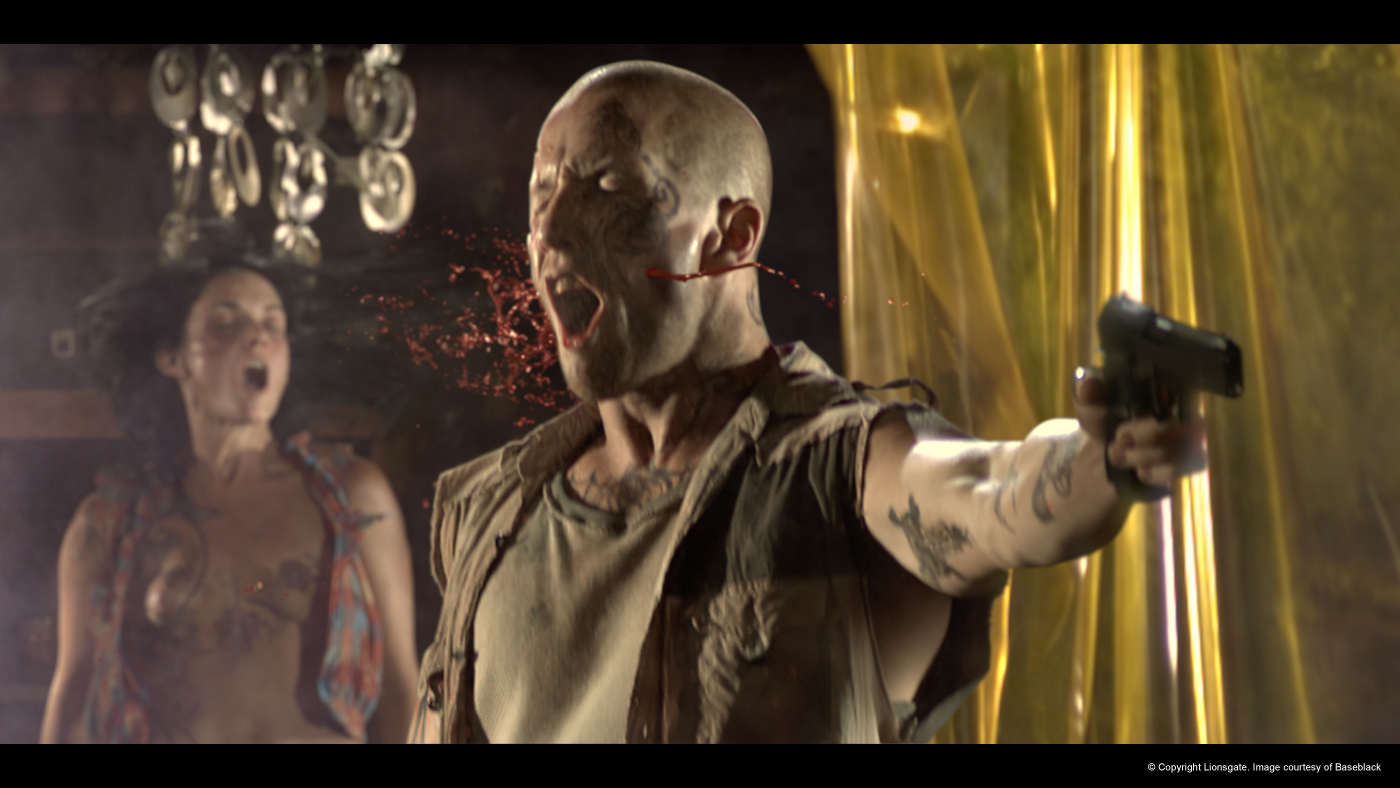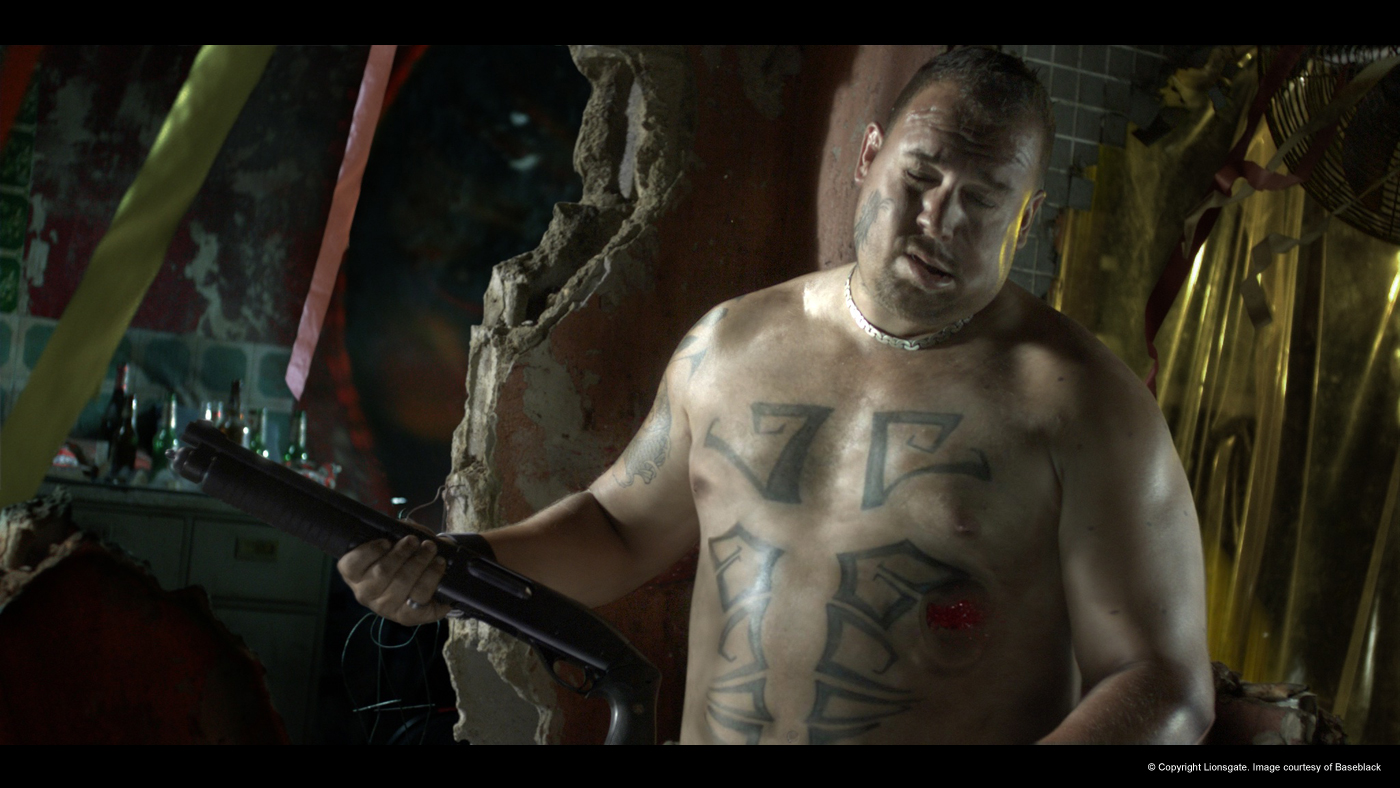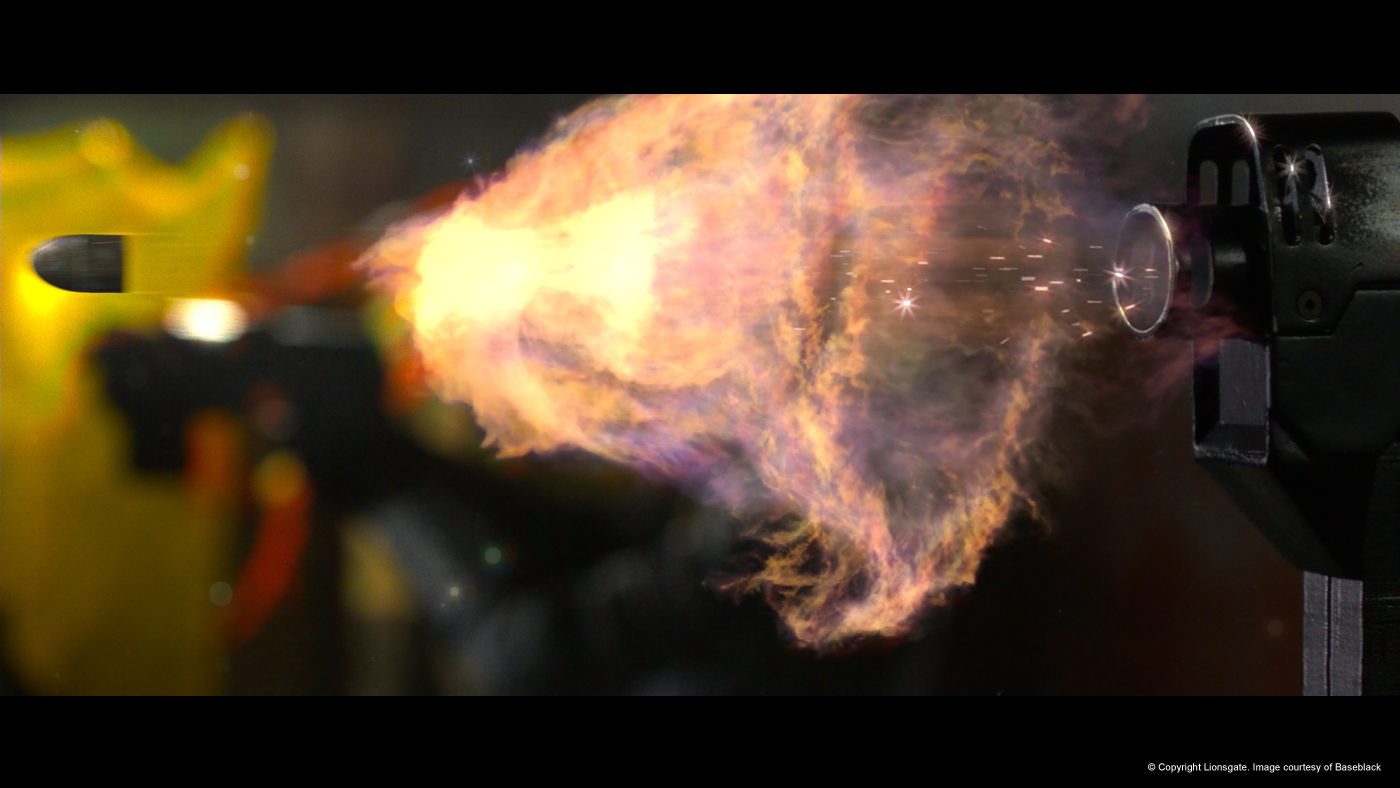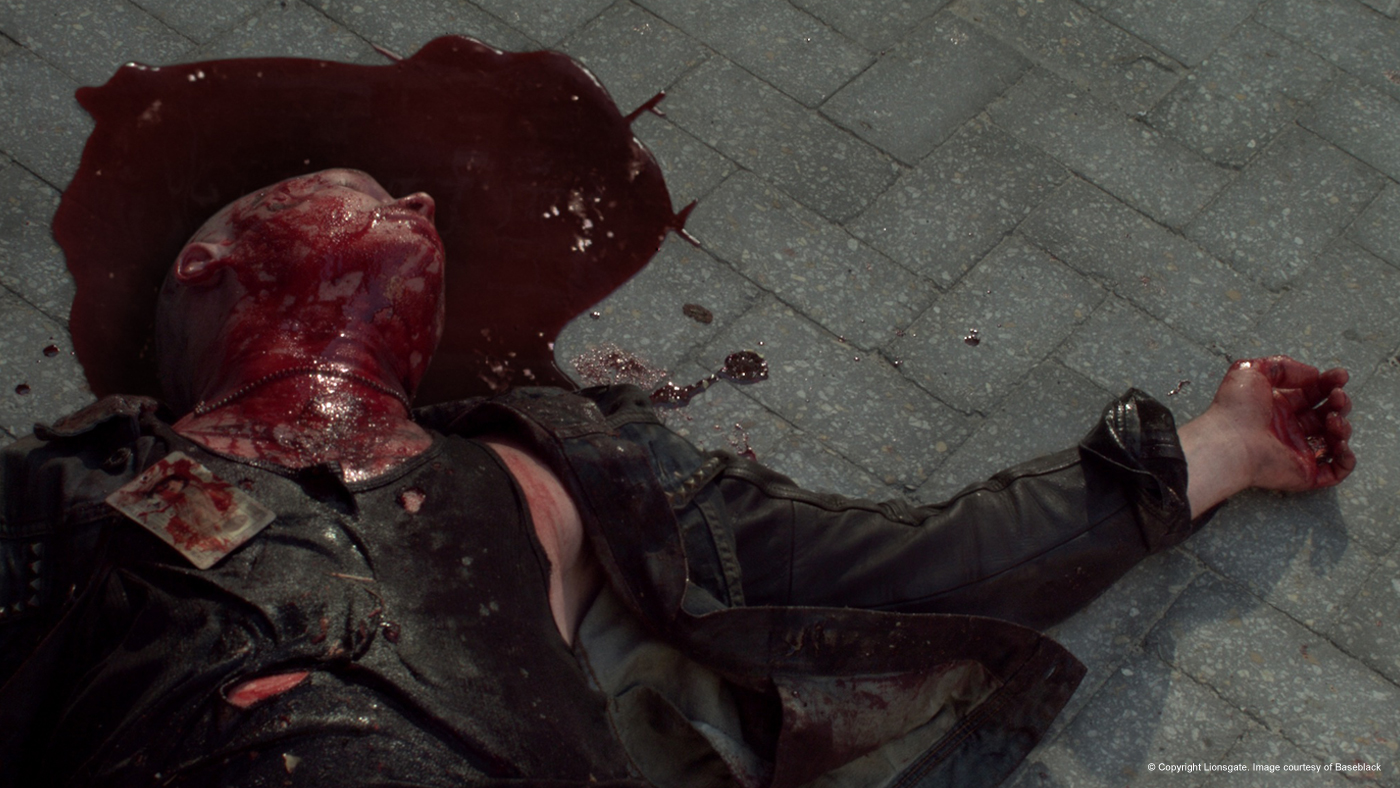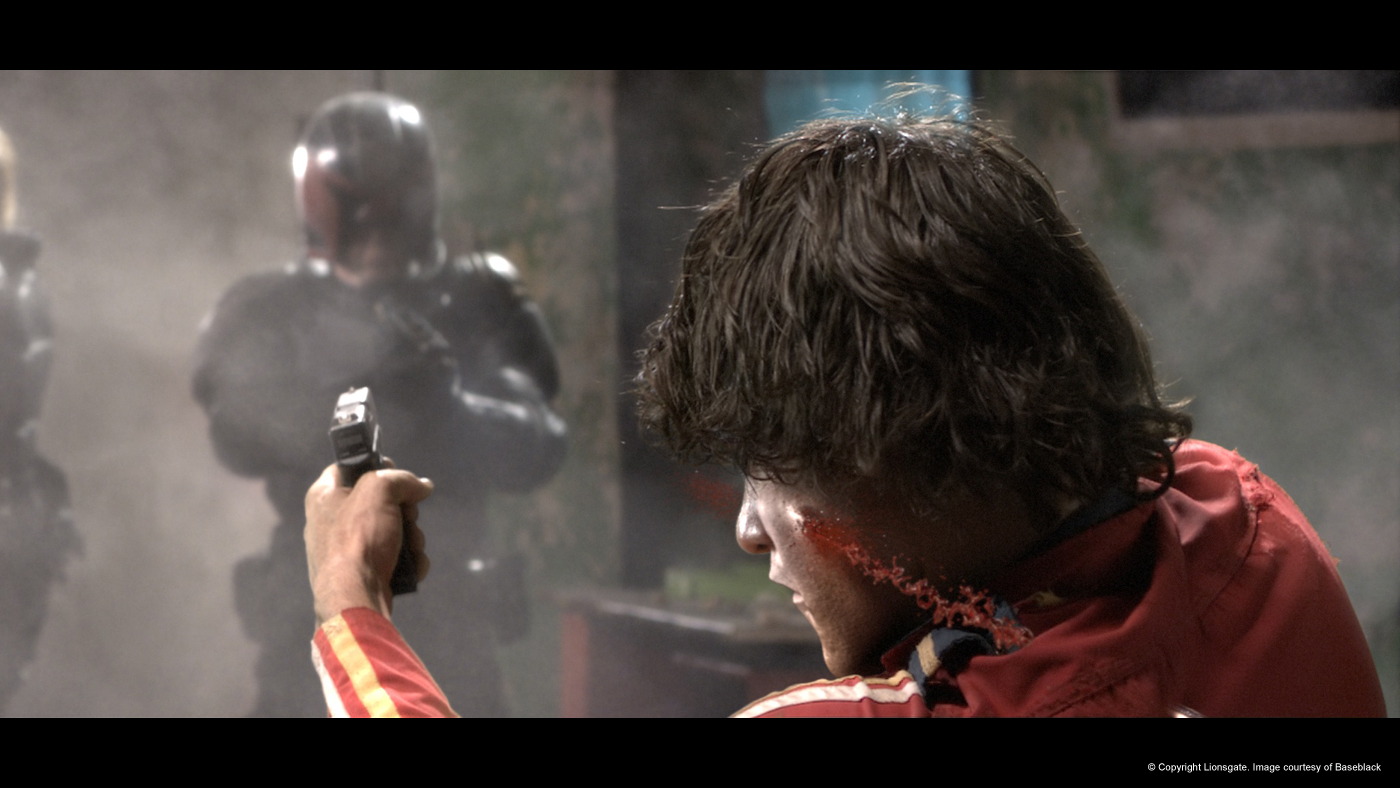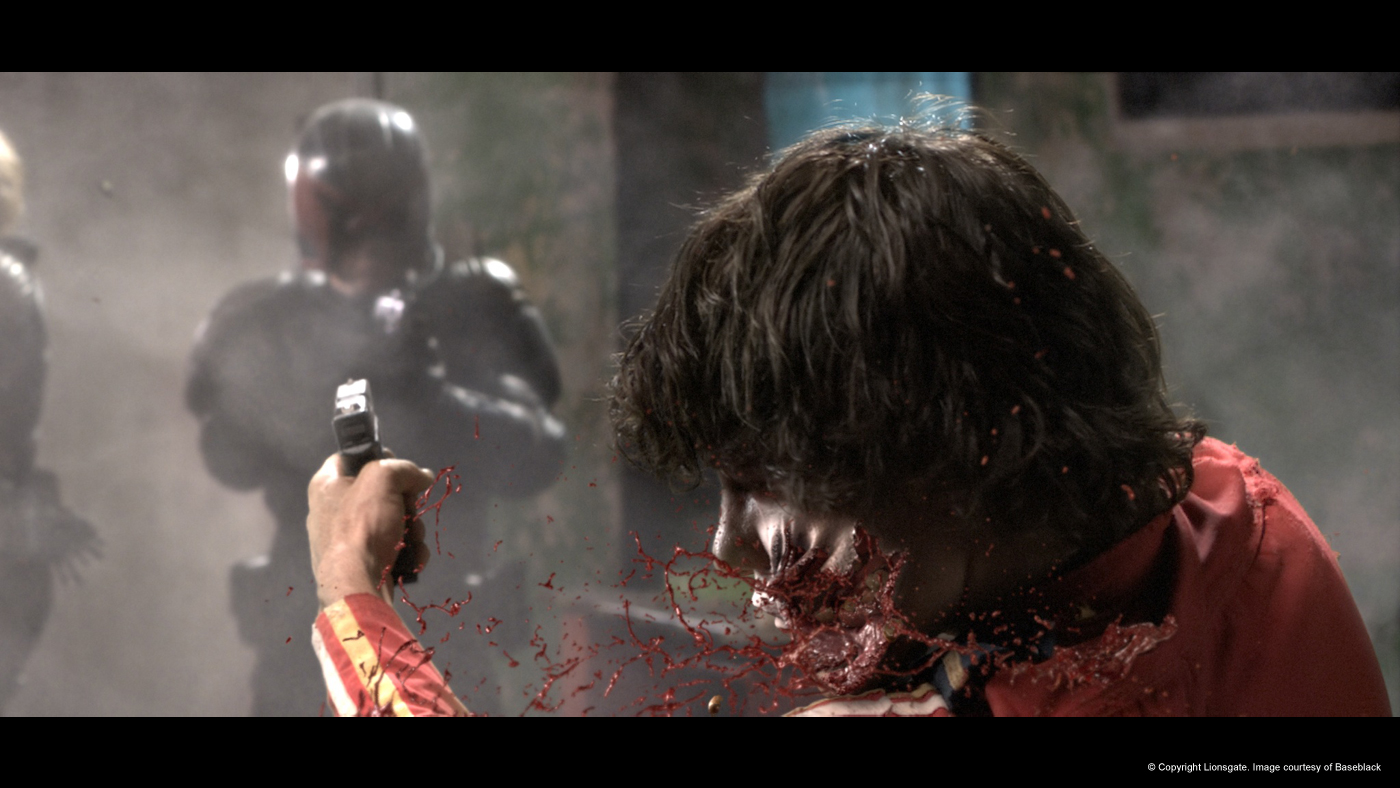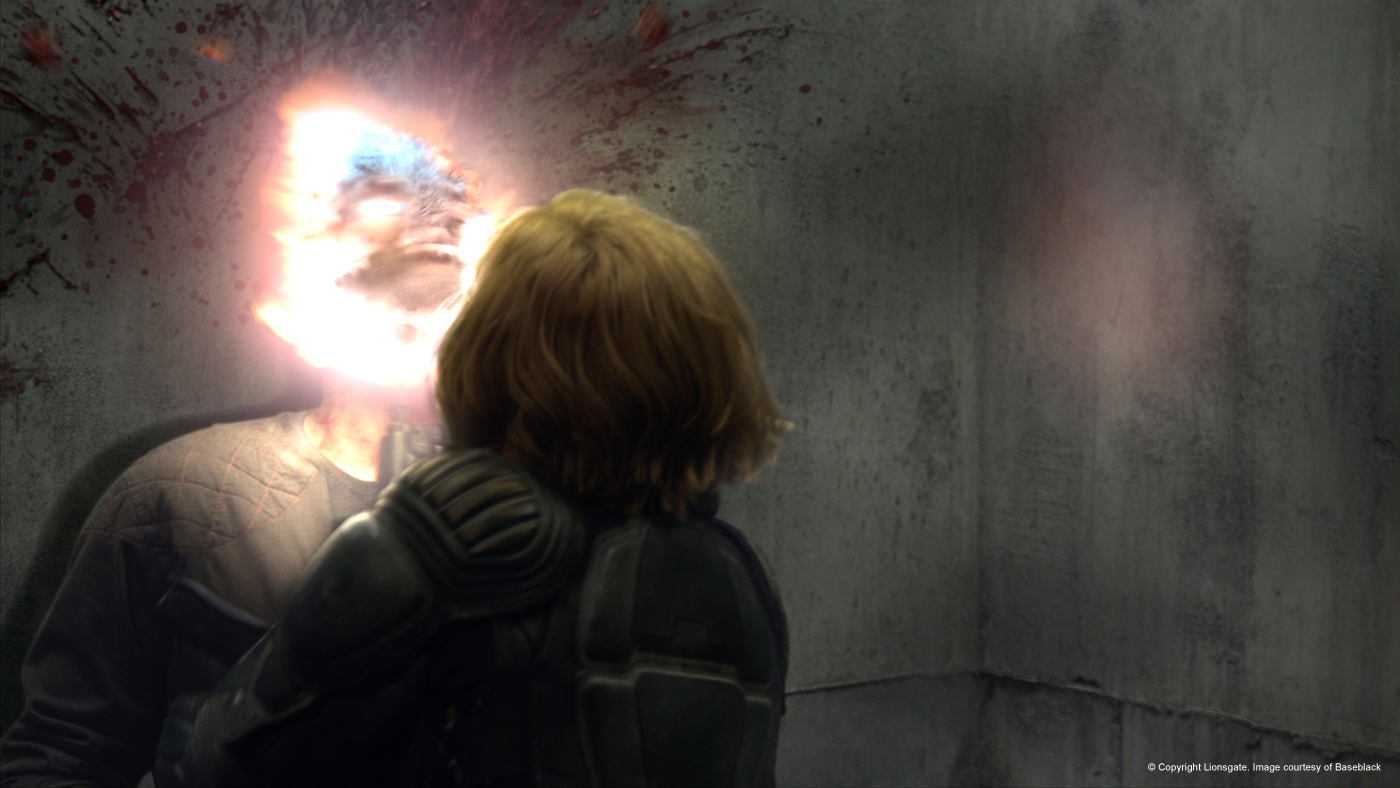Rudi Holzapfel is back to science fiction (he had talked about his work on TOTAL RECALL) and to The Art of VFX. In the following interview, he talks about the challenge of creating the slow-motion effects on DREDD.
How did Baseblack got involved on this show?
We got approached by Tim Field, one of the VFX producers on the show. Baseblack has a long working relationship with Tim.
How was the collaboration with Prime Focus VFX Supervisor Jon Thum?
We would usually meet with Jon once or twice a week and discuss what he was looking for in our particular shots. As most of our shots had to do with fluid simulations, blood, spittle etc. we usually looked at other shots where real fluids were used on set to talk about how things were to look.
Dredd is a hard-boiled movie with lots of blood. Can you explain to us how you created and manage the slow-mo blood and the slow-motion shots?
The biggest challenge with all the shots in slo-mo, especially with the blood and gore was probably getting the look of the blood right. It has some qualities that make it stick, stretch and glitter in a specific way that is very different from water. Finding reference, or even imagining what it might look like and agreeing on a look was difficult. Another thing that turned out to be more difficult than first imagined was the fact that the simulations often wouldn’t scale. We would do a lower resolution layout that looked good, but once you tried to scale it up, it just didn’t translate and the final result would look different. In the end we did all the basic simulations in Real-Flow, ingested them into Maya and added bespoke animation on top of the particle simulations to achieve the desired outcome.
Can you explain to us in details the soft body simulations?
I guess you are talking about the fat guy’s belly. We build a digital version of the guy’s torso including a simple muscle system to provide collision for the outer skin as well as give some deformation. We then fired a digital bullet through the new skin and used Maya’s cloth simulator to derive the final movement of the skin and fine-tuned it all with a lattice-deformation rig over the top and then fine-tuned some more with the muscle system.
Have you recreated the set and some elements for this sequence?
We didn’t so much replace backgrounds as we married several plates together. Sometimes this was based on greenscreen, but a lot of it was roto. On some of the blood-simulation shots we had three layers, a distant background, a midground with some poor victim and some special effects guy creating wind, smoke, sparks etc. and finally a foreground. To compose the shots we also mirrored backgrounds and midgrounds at times, respeed things and dramatically resized the foreground to fit with productions redesign of the final shot. That often meant creating depth, creating IO etc. from scratch.
How did you design and created the muzzle flash of Dredd gun?
We had a look at a lot of photographs, but some videos or film references, but most of those were actually already CG. They might be what we think a muzzle flash looks like in super slo-mo, but they weren’t the real thing. We did eventually find something on a ballistics expert site in the US that was very helpful and we went with that. In the end it became something stylish and dreamy, druggy, that might or might not be real. After all, this is a muzzle flash as seen under the influence of “slo.”
Can you tell us more about the assets sharing with Prime Focus teams?
We didn’t share any of our shots with other facilities until the very end when Prime Focus would add the “slo-mo effect,” a dramatic grade and extra particles, that they had developed, so we didn’t have to share assets at all.
Did you develop specific tools for this show?
Nuke does provide a lot of the stereo functionality already, so for us it was mainly integrating Real-Flow into our pipeline and setting up our 3D pipeline to render for two eyes eventually.
What was the biggest challenge and how did you achieve it?
The biggest challenge was building Real-Flow into our pipeline, getting it to work properly with our then Maya – Mental Ray pipeline. We had lots of problems initially, but we did eventually solve them, probably through sheer persistence. The other challenge was making a soft-body behave the way we wanted to. There was a scene when one of the guys, a rather big fellow, gets shot by Dredd and when the bullet enters his naked upper body, the whole thing was supposed to wobble and react in a very specific way to the impact. That took a lot of trial-and-error until we figured out a way to control the simulation to the degree necessary.
Was there a shot or a sequence that prevented you from sleep?
As we didn’t work on a sequence per se, it could only be a shot that might have kept me from sleeping. And although I didn’t lose any sleep over any of the shots, it did take us a long time to figure out how to best control the soft-body animation of the fat belly in one of the shots. To get it to the point where we were all happy with what we saw took numerous simulations and a fair amount of research.
What do you keep from this experience?
There are two particular shots that stand out. The first one is where Dredd is in the background and shoots a guy through his mouth and cheek with blood, teeth, tissue flying everywhere, eventually out of frame and into the audience.
The second one would be where Anderson shoots a guy’s head off at very close range. This was created in mono to be converted and one or our compositors literally ended up almost painting the shot frame by frame, because Jon had so much very specific feedback for this shot. We are a small facility that tries to deliver bespoke effects, and to be able to deliver [all] these shots in the way we did, that was pretty amazing. The team here is pretty amazing.
How long have you worked on this film?
We worked for about 5 months on DREDD 3D.
What was the size of your team?
It was 12 people, pretty much evenly split between 3D, 2D and production/editorial.
What is your next project?
Currently we are working on 47 RONIN.
A big thanks for your time.
// WANT TO KNOW MORE?
– Baseblack: Dedicated page about DREDD on Baseblack website.
© Vincent Frei – The Art of VFX – 2012


